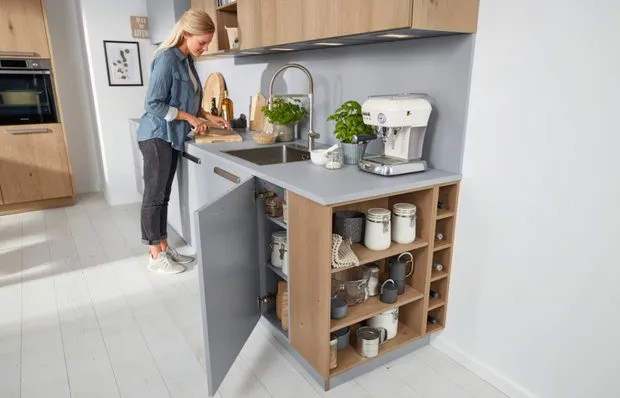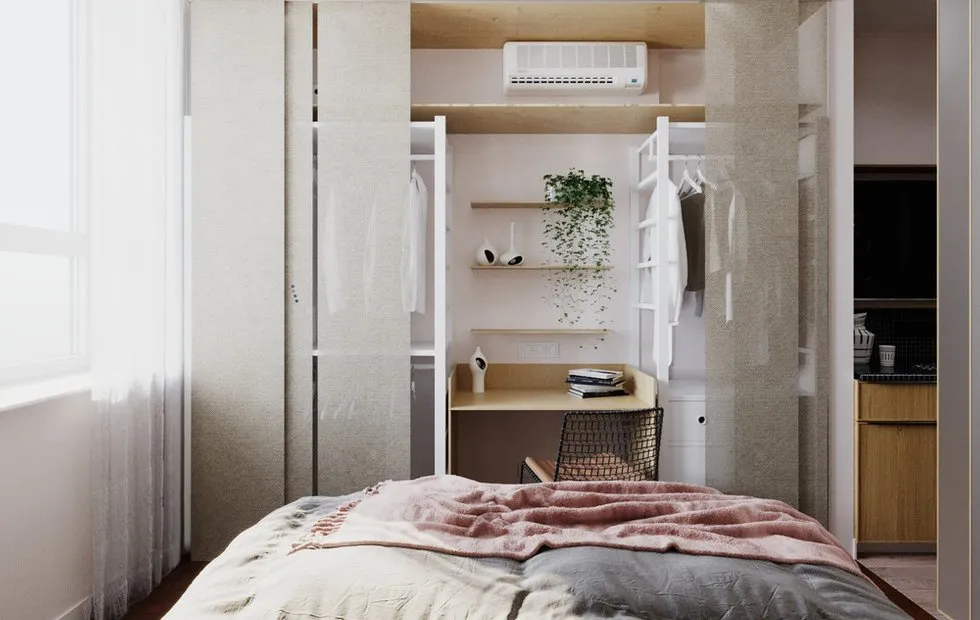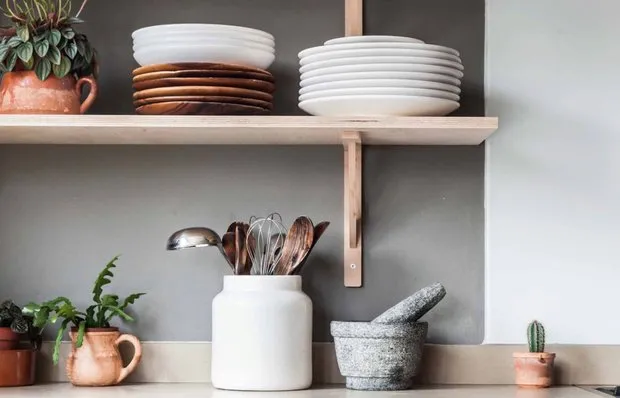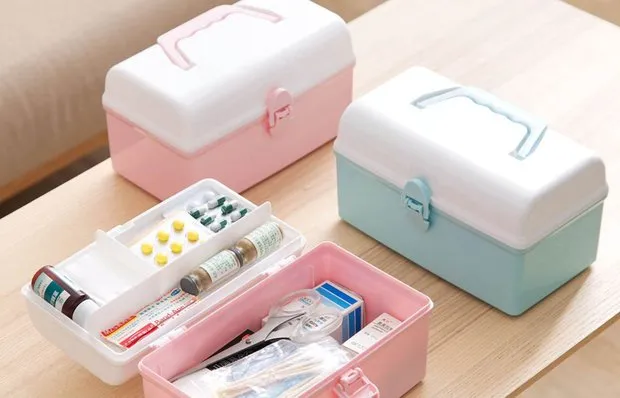There can be your advertisement
300x150
How to Organize Kitchen Cabinets Once and for All
And get rid of unnecessary items at the same time
There are many small items stored in the kitchen, about which you may not even remember. Let's find out how to organize cabinets and keep them tidy all the time.
Why it's better not to postpone cleaning?
- You will save money. Often we buy a third measuring cup only because we don't remember about the previous two. Now you will always know what and where is stored in your kitchen.
- Time. You no longer need to spend time looking for the necessary items. This simplifies the cooking process.
- It's convenient for the whole family. Nobody will ask where large pans or cutting boards are stored anymore. It's also much easier to clean up when each item has its own place.
Step 1: Clear the cabinets
Take out all items from the cabinets and immediately prepare two containers: one for trash and another for things you can give away or sell. Sort all dishes and accessories right away and leave only the items you plan to use on the kitchen counter.
Step 2: Sort Items
Before placing items in their designated spots, think carefully about how to organize them. Here are a few tips that will help you define categories and storage logic.
Place items where you use them most often
For example, if you always add spices to dishes, place them as close to the stove as possible. If you don't want to constantly reach for crackers for kids, store them on the lower shelf so all family members can easily access them (of course, this relies on their honesty and trust that they won’t eat everything at once).
Don't store food and dishes in the same place
Storage should follow a logic that you set for yourself. For example, food can be stored in the left cabinet, and dishes — in the right one. Or you can place food on top and dishes below.
If your kitchen is small and you only have one cabinet, create separate sections inside it for storage.
Divide items into categories
There are many options: for example, one shelf with food can be for canned goods, and another for grains. You can also separate frequently used products from those you use rarely. It’s also helpful to divide foods into healthy and less healthy options.
Dishes can be sorted by type, material or color — whatever is convenient for you. Choose categories that suit your needs and nothing will disrupt the organization in your cabinets.
Designate a shelf for daily-use items
This can include favorite mugs, plates or serving trays you use every day — place them as close to the kitchen area as possible. As for glasses you only drink from during holidays, store them further away or higher up.
Be careful
Arrange items so that everything is visible and easy to reach. Bowls and plates should be arranged by size: the largest ones at the bottom, and then in descending order.
Don't try to fit everything into one cabinet: if the shelves are completely full, you will definitely not be able to maintain order. Some items can be moved to another location.
Step 3: Place Everything in Its Proper Place
What to store in upper cabinets?
- Food. Group all ingredients needed for cooking (spices, sauces, oils, grains) in cabinets above the work surface so they are always within reach.
- Plates and cups. Store all dishes you use frequently above the dishwasher or drying rack — it's convenient.
- Containers. Store them above the work surface where you usually unpack groceries or sort products.
- Cookbooks. You can set aside a separate shelf if you prefer using recipes from books rather than online.
What to store in lower cabinets?
- Household appliances. It’s more convenient to access them while preparing dishes. Items you use very often can be moved to the countertop.
- Pots, pans and baking sheets. Pans should be stored vertically on the side to save space. The same applies to lids. You can buy a special container for them.
- Bowls, plates and cutting boards. Store them near the sink or dishwasher.
- Cleaning supplies. You can stack them in a cabinet under the sink and preferably on the bottom shelf — just in case something spills. Try not to store chemicals near dishes or food — it's dangerous.
Step 4: Maintain Order
Agree with family members to stick to the established order. Explain or write down what and where is stored. For the first time, you can hang it on the refrigerator so nobody forgets.
During cleaning, always check that everything is in its place. It's much easier to fix small issues occasionally than to reorganize everything from scratch.
39 Ideas for Storage in Small Kitchens
Creative solutions for your apartment, inspired by Western designers.
More articles:
 Wow Effect on the Kitchen: 14 Ways to Surprise
Wow Effect on the Kitchen: 14 Ways to Surprise How to Disinfect a Smartphone: Step-by-Step Guide
How to Disinfect a Smartphone: Step-by-Step Guide How to Save Money on Summer House Maintenance During a Crisis?
How to Save Money on Summer House Maintenance During a Crisis? 10 IKEA Products You Can Buy Online with Discounts
10 IKEA Products You Can Buy Online with Discounts 5 Cozy Bedrooms from March Projects
5 Cozy Bedrooms from March Projects 15 Minutes a Day: How to Maintain Order at Home Without Going Crazy
15 Minutes a Day: How to Maintain Order at Home Without Going Crazy Cleaning During Quarantine: Step-by-Step Plan
Cleaning During Quarantine: Step-by-Step Plan Home Medicine Kit: 5 Useful Tips
Home Medicine Kit: 5 Useful Tips